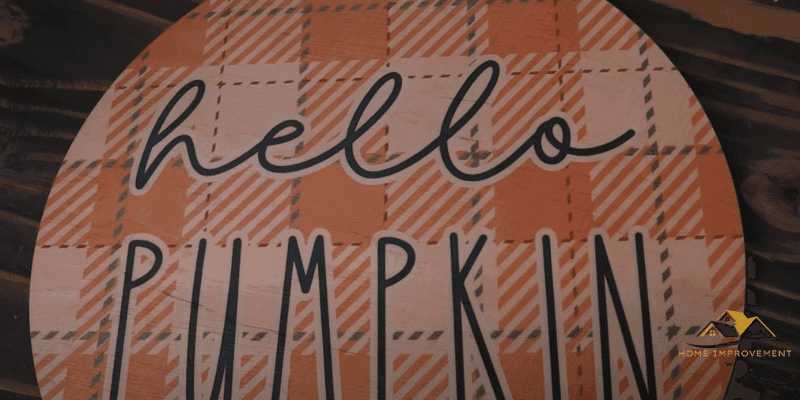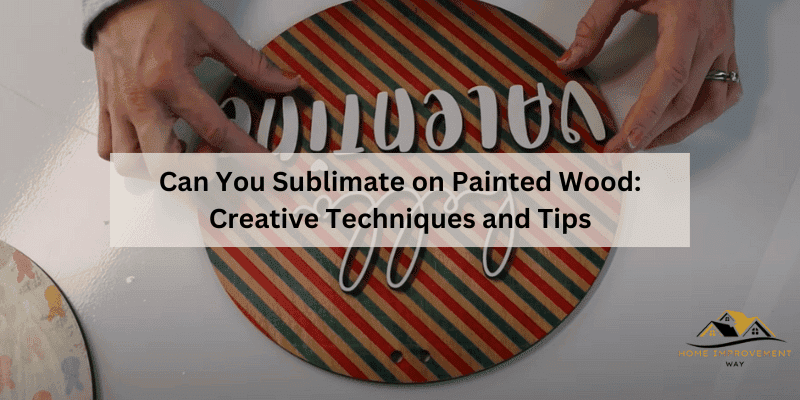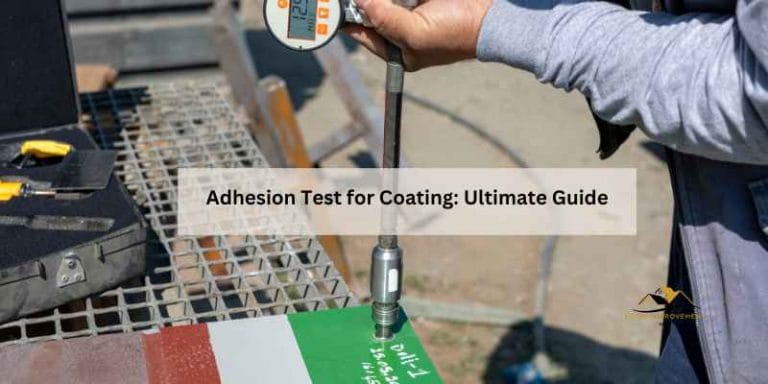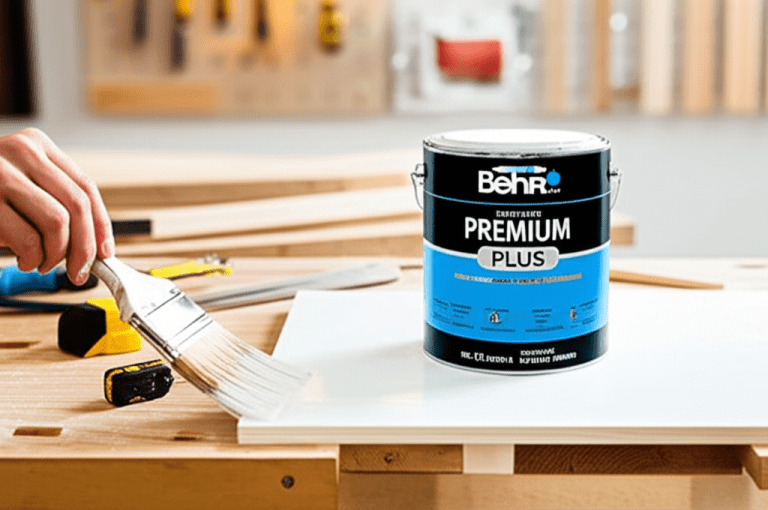Can You Sublimate on Painted Wood: Creative Techniques and Tips
Yes, you can sublimate on painted wood. Sublimation can be done directly on painted wood surfaces by using a heat press and sublimation ink.
Looking to personalize your wooden signs or create custom home décor pieces? Sublimating on painted wood offers a versatile and durable method for transferring vibrant designs and photos onto your wooden surfaces. This process allows for high-quality, long-lasting images that won’t fade or peel, making it an ideal option for creating unique and eye-catching items.
Whether you’re a DIY enthusiast or a professional looking to offer customized wood products, sublimating on painted wood can unlock a world of creative possibilities. In this guide, we’ll explore the process of sublimating on painted wood, the necessary materials, and best practices to achieve outstanding results.
Understanding The Compatibility
Sublimation Process
Sublimation is a process that involves transferring dye onto a material using heat and pressure. This method is commonly used in the printing industry to create high-quality, long-lasting images on a variety of products such as garments, mugs, and wood. The process involves the transformation of the dye from a solid to a gas, which permeates the surface of the material and then solidifies to become a permanent part of the substrate.
Properties Of Painted Wood
Painted wood is a popular material for various crafting and decoration purposes due to its versatility and aesthetic appeal. The surface of painted wood is typically coated with layers of paint, which can vary in type and composition, potentially impacting its compatibility with the sublimation process. It is crucial to understand the properties of the painted wood substrate to ensure successful sublimation results.
Interactions Between Sublimation And Paint
When sublimating on painted wood, it is essential to consider the potential interactions between the sublimation ink and the paint layers. The success of the sublimation process on painted wood depends on various factors such as the type of paint used, its curing process, and the compatibility of the paint with the sublimation dyes. Understanding these interactions is paramount in achieving optimal sublimation results on painted wood surfaces.
Preparing The Wood Surface
Preparing the wood surface is crucial for successful sublimation on painted wood. Taking the necessary steps to ensure a smooth, clean, and suitable surface is key to achieving high-quality sublimation results. In this post, we’ll cover the essential aspects of preparing the wood surface for sublimation, including ensuring even paint application, sanding and priming, and choosing the right paint for sublimation.
Ensuring Even Paint Application
Before sublimating on painted wood, it’s essential to ensure that the paint application on the wood surface is even and smooth. Any inconsistencies in the paint can negatively impact the quality of the sublimation transfer. To achieve an even paint application, consider using a high-quality paint sprayer or an airbrush for precise and uniform coverage. Take the time to carefully apply the paint in thin layers, allowing each layer to dry completely before applying the next. This will help to avoid drips, streaks, or uneven coverage, ultimately leading to a more satisfactory sublimation result.
Sanding And Priming
Prior to applying the paint for sublimation, it’s essential to prepare the wood surface through sanding and priming. Start by sanding the wood to create a smooth and uniform texture. Use fine-grit sandpaper to gently remove any rough spots, imperfections, or old paint layers. This step is crucial for promoting proper paint adhesion and avoiding uneven sublimation transfers. Following sanding, apply a suitable wood primer to the surface. The primer helps to seal the wood, providing a stable and consistent base for the paint and sublimation transfer. Be sure to choose a primer designed for use with the specific type of paint you’ll be using for sublimation. This will help to maximize the adhesion and durability of the painted surface.
Choosing The Right Paint For Sublimation
When sublimating on painted wood, the choice of paint is a critical factor in achieving successful results. Opt for a high-quality, heat-resistant paint that is compatible with the sublimation process. Look for paints specifically formulated for sublimation, as these are designed to withstand the heat and pressure of the sublimation transfer, ensuring vibrant and long-lasting results. Additionally, consider the color range and finish options available in the paint line, as these factors can influence the final appearance of the sublimated image. Ensure that the chosen paint is suitable for the intended application method, whether spraying, brushing, or rolling, to achieve the desired coverage and consistency.
Sublimation Techniques
When it comes to sublimation on painted wood, it’s crucial to understand the sublimation techniques involved. By mastering the application of heat and pressure, applying protective coatings, and preventing warping and damage, you can achieve outstanding sublimation results on painted wood surfaces.
Applying Heat And Pressure
Applying heat and pressure is a critical step in the sublimation process on painted wood. Utilizing a heat press with the recommended temperature and time settings ensures that the sublimation dyes are transferred effectively onto the painted wood surface. The correct application of pressure guarantees a consistent and vibrant transfer of colors onto the wood, creating stunning and durable sublimated designs.
Protective Coatings
Protecting the sublimated designs on painted wood is essential to ensure longevity and durability. Apply a protective coating specifically designed for sublimated surfaces to safeguard the colors and prevent fading or scratching. Choose a high-quality clear coat or sealant that is compatible with sublimation inks to enhance the visual appeal and preserve the integrity of the sublimated artwork on the painted wood.
Preventing Warping And Damage
To prevent warping and damage to the painted wood during the sublimation process, it’s imperative to take necessary precautions. Use a heat-resistant substrate and ensure uniform heat distribution during the sublimation transfer to avoid any potential warping of the wood. Additionally, carefully monitor the temperature and duration of the heat press to prevent overheating and damage to the painted wood surface, ensuring the sublimation process is executed flawlessly.
Creative Sublimation Ideas
Sublimation on painted wood is a creative way to add personalized and decorative elements to your projects. With vibrant colors and high-quality results, sublimation opens up a world of possibilities for custom signage, personalized gifts, and artistic applications. Let’s explore some engaging sublimation ideas for painted wood:
Custom Signage And Decor
Sublimating on painted wood allows for the creation of custom signs and decor pieces. Whether it’s a welcoming sign for a business or a charming decorative piece for a home, sublimation can bring designs to life on painted wood surfaces. The durability and visual impact of sublimated wood decor make it an ideal choice for businesses and interior decorating enthusiasts alike.
Personalized Gifts
Delight your loved ones with personalized gifts created through sublimation on painted wood. From custom photo plaques to name-engraved coasters, the ability to sublimate on painted wood opens up a plethora of options for creating unique, heartfelt gifts. The durable nature of sublimated wood ensures that these personalized items will be cherished for years to come.
Artistic Applications
Artists and creatives can take advantage of sublimation on painted wood to produce stunning artistic pieces. The fusion of sublimation technology with the natural beauty of wood can lead to captivating artworks, from intricate designs to vibrant landscapes. The versatility of sublimated wood makes it a compelling medium for those seeking to explore new artistic avenues.

Tips For Successful Sublimation
When it comes to sublimating on painted wood, there are certain tips and techniques that can help ensure successful results. By paying attention to proper temperature and timing, maintaining color integrity, and troubleshooting common issues, you can achieve excellent sublimation outcomes on painted wood surfaces.
Proper Temperature And Timing
Proper temperature and timing are crucial factors when sublimating on painted wood. The ideal temperature for sublimation on wood is typically around 400-425°F. It’s essential to ensure that the heat press is evenly distributing the heat and maintaining the required temperature throughout the sublimation process. Additionally, timing is equally important. The recommended sublimation time for wood surfaces is usually between 40-60 seconds. However, it’s essential to refer to the specific sublimation paper and ink manufacturer’s guidelines for precise temperature and timing recommendations.
Maintaining Color Integrity
To maintain color integrity when sublimating on painted wood, it’s crucial to start with a clean and smooth painted surface. The quality of the paint and the smoothness of the wood surface can significantly impact color vibrancy and clarity. Additionally, using high-quality sublimation inks and paper is essential for achieving vibrant and long-lasting colors. Properly calibrating the sublimation printer and ensuring accurate color profiles can also contribute to maintaining color integrity throughout the sublimation process.
Troubleshooting Common Issues
When sublimating on painted wood, several common issues can arise, such as uneven color transfer, blurriness, or color discrepancies. To troubleshoot these issues, make sure to inspect the painted wood surface for any imperfections or inconsistencies before the sublimation process. Adjusting pressure, temperature, and timing on the heat press can help address uneven color transfer. For blurriness or color discrepancies, double-check the quality of the sublimation paper, ink, and ensure that the printing settings are optimized for wood sublimation.
Frequently Asked Questions On Can You Sublimate On Painted Wood
Can You Sublimate On Painted Wood?
Yes, you can sublimate on painted wood using special sublimation coatings. The process involves applying a sublimation coating to the painted wood surface and then using a heat press to transfer the sublimation ink onto the coating. This creates vibrant and durable images on painted wood surfaces.
What Type Of Paint Works Best For Sublimation?
For sublimation, it’s best to use a high-quality, white, and polyester-based paint. This type of paint allows for better sublimation ink absorption and transfer, resulting in vibrant and long-lasting sublimated images. Avoid using oil-based or acrylic paints, as they may not allow for proper ink transfer.
Is It Necessary To Sand The Painted Wood Before Sublimation?
Yes, sanding the painted wood before sublimation is essential to create a smooth and even surface for the sublimation coating to adhere to. It also helps to remove any imperfections or rough areas on the painted wood, ensuring a better outcome for the sublimation process.
Conclusion
Sublimating on painted wood can yield impressive results if done correctly. With the right techniques and equipment, you can achieve vibrant and long-lasting designs on painted wood surfaces. Experimenting with different temperatures and pressures can help you achieve the best possible outcome for your sublimation projects on painted wood.
Overall, with careful consideration and practice, sublimating on painted wood is definitely worth exploring as a creative option for personalized and unique décor and gifts.







